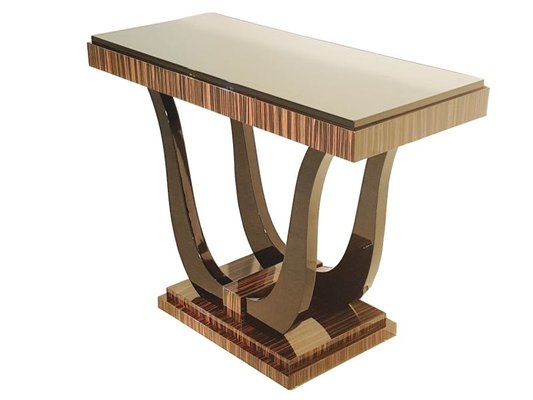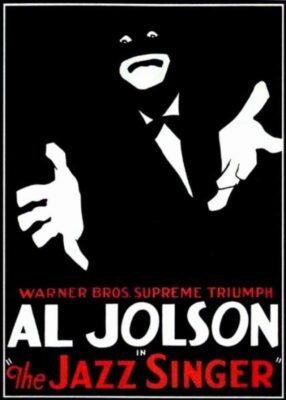Art Déco: a cultural movement that has pervaded all sectors of Art, Design and Architecture.
The denomination
Art Déco (or Artjm Decò) finds its name only starting from 1960 even if its roots can be traced back to 1925, when the Exposition Internationale des Arts Decoratifs et Industriels Modernes took place in Paris, i.e. an exhibition which mainly concerned the arts considered minor compared to painting.
History
Paris, which remained the international center of good taste even in the years after the Great War, uses the world showcase which is the Exhibition, to make the world aware of the new applications of artistic imagination to the objects of modern life. Art Deco is considered a transitional movement towards industrial design, with a style and a model of aesthetic taste that spread in Europe and the United States between the “roaring twenties” and the thirties of the twentieth century. However, during the years of the movement, Paris remained the main city of reference even if Art Deco involved all continents, especially pervading the visual arts such as architecture, fashion, graphics and design. Art Deco was not born, unlike other movements of that era, with a manifesto or a well-defined ideology, but this phenomenon rather indicated a certain aesthetic and stylistic taste that fit well into the historical context that arose around of the two world wars. It had temporal focal points that varied depending on the country involved, as it involved not only Europe but also the United States and Canada, countries that saw this current manifest itself especially during the 1930s, years during which Art Deco was already seeing its its decline in European countries. Art Deco reached India where it continued until the 1960s. Only when it faded did this movement take the name of Art Deco. In fact, the term was only used towards the 1960s, when that taste was re-evaluated and put back into the antiques circuit.
Style
More than style, we can talk about “Deco taste” and we mean the natural evolution of the achievements of Art Nouveau as a function of quality industrial production and, at the same time, responding to the needs of variety, practicality and low cost required from an increasingly diversified social context. French “Art Nouveau“, born in 1890, was called “Liberty, or floral style” in Italy, “Jugenstil” in Germany, “Secession” in Austria, “Modern style” in Great Britain and “Modernismo” in Spain . Art Deco is a sort of natural evolution also applied to objects of common use, just think of all the production of furniture and furnishing accessories or objects of common use. The new style abandons sinuosities and naturalistic linear formulas, preferring geometric shapes and longing for essential and elegant shapes.  The new style abandons sinuosities and linear formulas naturalistic, preferring geometric shapes and longing for essential and elegant shapes. Art Deco is characterized by the use of materials such as: lacquer, inlaid wood, shark or zebra skin, stainless steel, aluminum, colored glass, when it turns to furniture. But furniture is not the only expression of modern art which also deals with wrought iron, lacquer, watches and jewellery. Art Deco is a synthetic and at the same time volumetrically aerodynamic, hard and opulent style, probably in reaction to the austerity imposed by the years of the world war and the consequent economic crisis (in Italy the autarchic period). Art Deco is a synthetic and at the same time volumetrically aerodynamic, hard and opulent style, probably in reaction to the austerity imposed by the years of the world war and the consequent economic crisis (in Italy the autarchic period). Art Deco is essentially characterized by classic and symmetrical forms, clear geometries and plasticity in the figures. From this point of view, Déco visually contrasts with the Liberty style, characterized instead by flexible shapes that recall nature and its sweetness. The contrast is also clear in the philosophy underlying the two philosophies: the Art Nouveau style is as romantic, sweet and dreamy as the Deco style is energetic, compact and worldly, a direct heir, after all, of Futurism. After all, the watchword of the Déco style is “modernity“. Cars, planes, skyscrapers, ocean liners, airships and electric lights they are the new myths of a society that looks with contempt on everything considered “old”.
The new style abandons sinuosities and linear formulas naturalistic, preferring geometric shapes and longing for essential and elegant shapes. Art Deco is characterized by the use of materials such as: lacquer, inlaid wood, shark or zebra skin, stainless steel, aluminum, colored glass, when it turns to furniture. But furniture is not the only expression of modern art which also deals with wrought iron, lacquer, watches and jewellery. Art Deco is a synthetic and at the same time volumetrically aerodynamic, hard and opulent style, probably in reaction to the austerity imposed by the years of the world war and the consequent economic crisis (in Italy the autarchic period). Art Deco is a synthetic and at the same time volumetrically aerodynamic, hard and opulent style, probably in reaction to the austerity imposed by the years of the world war and the consequent economic crisis (in Italy the autarchic period). Art Deco is essentially characterized by classic and symmetrical forms, clear geometries and plasticity in the figures. From this point of view, Déco visually contrasts with the Liberty style, characterized instead by flexible shapes that recall nature and its sweetness. The contrast is also clear in the philosophy underlying the two philosophies: the Art Nouveau style is as romantic, sweet and dreamy as the Deco style is energetic, compact and worldly, a direct heir, after all, of Futurism. After all, the watchword of the Déco style is “modernity“. Cars, planes, skyscrapers, ocean liners, airships and electric lights they are the new myths of a society that looks with contempt on everything considered “old”.
It is no coincidence that the Art Deco textures, sudden, broken but at the same time orderly and harmonious, take up the rhythm of Jazz music, which together with the Charleston was becoming popular in those years in the nightclubs of Paris, Chicago and New York.
The interpreters of Art Deco
Paris remains the heart of the development of Art Deco design with the furniture of Jacques Emile Ruhlmann, who renewed the glories of Parisian cabinet-making Rococò and Empire style, with the modernistic panels and furniture of Eileen Gray, with the wrought iron of Edgar Brandt and the metalwork and lacquerware of Jean Dunand, with the glasswork of René Lalique and Maurice Marinot, with the watches and jewelery of Cartier.

In Austria, the first works of the Wiener Werkstätte, founded in 1903, and especially those of abstract geometry by the main exponent, Josef Hoffmann, should be noted.
The Polish painter Tamara de Lempicka made a name for herself in painting, managing to embody the soul of the Déco style with her beautiful, cold and worldly women and who continued to influence other artists up to the present day.
Art Deco is expressed largely through architecture: cinema halls, railway stations, public buildings, ocean liners, bourgeois residences built in the 1920s often bear unmistakable traces of this style.

Among the most famous examples are the Empire State Building, the Chrysler Building and the interiors of Radio City Music Hall, all in New York City. In Miami Beach, Florida, the Art Deco Historic Districts, the place with the highest concentration of Art Deco architecture in the world, with buildings built between 1934 and 1943.
In the graphics sector, the name of Cassandre stands out, advertising poster designer and graphic designer, George Barbier, fashion illustrator and designer and author of the famous fashion “cards” very popular at the time.
Eileen Gray, as well as being a well-known designer, was also a famous architect who created works such as the “E-1027 house“.
Art Deco’s End
The Deco style begins to go out of fashion when it becomes “mass”. That is, when, thanks to industrial production, Deco-style design and furnishing objects can enter all homes, causing them to lose that aura of exclusivity that had characterized their rise. The overcoming of Art Deco becomes the starting point of Modernism and continues to be used until the 1960s.
There is a new interest in Art Deco in the 1980s, thanks to the graphic design of that period, where its association with film noir and 1930s fashion leads to its use in advertising for fashion and jewellery.
INSIGHTS
The Art Déco Exhibition – Forlì (Video)
Introduction to Art Déco (Video)
Art Déco – Victoria and Albert Museum – London
Art Déco Museum of Miami (USA)
Empire State Building – NYC (USA)
Do you also want to be part of the 1Solo.com traders?

